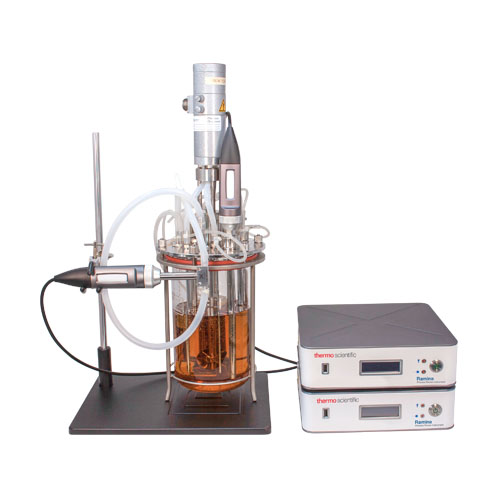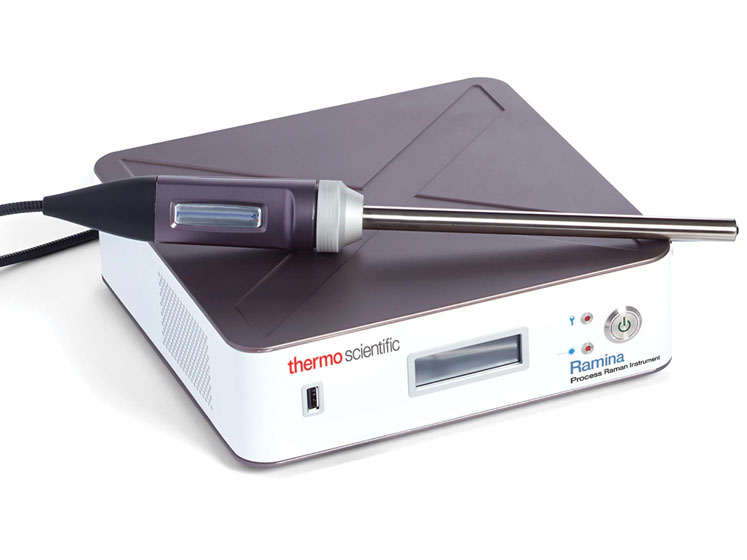Raman spectroscopy is easy to use in automated workflows; it requires no sample preparation, thereby streamlining QC and enabling continuous manufacturing.
Dean Stuart, Product Manager at Thermo Fisher Scientific (pictured), talks about the benefits of Raman-based devices compared with other spectroscopic tools and how they have proven to be invaluable tools for the pharmaceutical industry.
Minimising interruptions
Time is of the essence in all aspects of modern business and this certainly applies to manufacturing; costs can be significantly reduced if getting a product to market can be expedited with minimal pauses throughout the production process.
Continuous manufacturing has therefore become the gold standard in many industries, offering shorter production times and long-term cost savings. In addition, this approach can be used to improve the quality of the final product while making processing itself more energy efficient.
Product consistency is also improved as continuous manufacturing leads to fewer people being directly involved in the process from start to finish — minimising the risk of human error.

This can make a huge difference; a study done by the Industrial BioDevelopment Laboratory revealed variability levels of more than 20% in test results among 16 experienced technicians adhering to the same manual standard operating procedure.1
As a result, the pharmaceutical industry has seen a movement towards the implementation of solutions that remove as many manual steps as possible from the production process, thereby reducing inter-operator inconsistencies.
Automating QC
The rigorous regulations inherent in pharmaceutical manufacturing have made QC a large and integral part of the overall process. This creates additional challenges for continuous manufacturing, requiring new ways to test the composition of ingredients and partial products without disrupting the process.
Raman spectrometers are ideal for this purpose and are becoming increasingly popular among industry leaders; they can not only help to identify and quantify incoming compounds, but they can also be used for QC measurements at virtually every stage of the manufacturing process.
Common approaches include validating incoming raw materials straight through the packaging using handheld Raman spectrometers and automating downstream QC by installing Raman process analysers in line with the flow.
Aside from making QC more efficient, this will also reduce costs as it will no longer be necessary remove samples and send them for testing (either externally or in-house in a dedicated QC lab).
As an average pharmaceutical manufacturing facility spends approximately $40 million per year on QC, this can make a big difference to margins.2 In addition, streamlining QC in this way helps to spot and correct any issues earlier, reducing reagent wastage and product rejection.
Raman spectroscopy throughout the years
Raman spectroscopy is a far from new concept and the theory behind it is decades old.
However, the spectrometers themselves have changed tremendously, evolving from rough models using a mercury lamp as a light source — recording the spectrum on a photographic plate after hours or days of exposure — to instruments based on reliable, stable and inexpensive lasers with narrow linewidths to truly minimise the frequency variations of the emitted photons and ensure accurate results.
The size of these instruments has also decreased with time; modern spectrometers can be made small enough to be comfortably handheld.
Raman spectrometers can provide a lot of valuable information about the substances they’re used to test — such as the chemical structure, phase and polymorphy, crystallinity and molecular interactions — by analysing how they scatter incoming light.

The light supplied by the laser is delivered to the specimen of interest through a fibreoptic cable with a probe at its end. The incoming energy causes the molecules to vibrate and scatter the light, which is collected and interpreted by a detector.
The scattering can be either elastic — meaning the frequency of the outgoing photon is unchanged — or inelastic, wherein the energy of the photon shifts up or down. In this manner, a Raman spectrum is created, which is a collection of peaks at certain photon energies and is unique to each molecule.
These spectra can be used to tell which molecules are present in a sample — by looking at the positions of the peaks — as well as in what amounts; the intensity of the peaks is linearly dependent on the concentration of the corresponding molecule.
Another important benefit of Raman spectrometry is that, unlike other common spectroscopic techniques — such as Fourier transform infra-red (FTIR) and near infra-red (NIRS) — it is not affected by water.
Indeed, Raman spectrometers can be conveniently used on samples in liquid form. In addition, these tools can report on the degree of hydration, distinguishing between monohydrate, anhydrous and trihydrate molecules.
Measurements at every process step
Compact, robust and non-destructive Raman analysers — including miniaturised handheld Raman analysers with quantitative analysis capabilities such as the Thermo Scientific TruScan RM with TruTools — are ideal for inline or online, as well as at-line and offline, measurements.
Inline measurement can be done by placing a probe or sampling interface either inside or in line with the process or product flow, performing evaluations at several different locations in parallel to determine product consistency throughout the process.
In biopharmaceutical applications, this often means placing the Raman probe directly inside the bioreactor, which provides a detailed insight into pivotal reactions and helps to keep track of fundamental parameters such as glucose, lactate and glutamine levels, osmolality, protein aggregation and viable cell density.
Online measurement is similar to inline monitoring as samples are measured without being removed from the production line. The difference is that some of the product is redirected for Raman analysis, then reintroduced into the process stream or sent to waste after testing (depending on the application).

At-line and offline measurement: Contrary to inline and online measurements that do not involve sample collection, at-line and offline methods require a small portion of the substance of interest to be removed from the production line.
At-line and offline measurements are differentiated by the distance between the production facility and the site where the analytical measurements are done. For at-line analysis, samples are removed for testing at or near the process. Offline measurements, by contrast, are done away from the production site, often at a remote laboratory.
Suitable for automation
Another important benefit of Raman spectroscopy is that it does not require any sample preparation, allowing the generated spectra to be analysed completely automatically, which makes this method well suited for automated workflows.
Some Raman spectrometers on the market can even record each spectrum and give a simple “pass” or “fail” result, generating reports without any user intervention.
This data can be fed into an automated system that will send a warning if a parameter goes beyond the process specification, allowing the issue to be addressed in a timely manner.
In addition, the system can also notify operators when a target amount of a certain substance has been reached, ensuring maximal process efficiency.
Ease of use
Top-of-the-line Raman spectrometers are made with the operator in mind and are very user-friendly. They require minimal validation, making it is possible to build ID tests based on a single sample and expand the ID library as necessary.
All data used for identification can be transferred between different instruments, saving time as it is no longer necessary to repeat work that has already been done.
Many Raman instrument suppliers can also offer set-up and validation assistance, as well as advice regarding how to operate the spectrometers in pharmaceutical manufacturing applications. Some of the more well-established companies can even help to validate chemometric models, relying on their extensive knowledge and expertise.
Summary
Continuous manufacturing can help pharmaceutical companies to make their processes more efficient, getting their products to market faster while, at the same time, reducing their costs.
QC is a big part of any manufacturing process, especially in pharmaceutical applications, and continuous manufacturing requires robust methods for composition evaluation that are suited to automated processes.
Raman spectroscopy is a popular choice for this purpose, offering many benefits compared with other spectroscopic methods. Crucially, Raman spectrometers are not affected by water and can handle wet or liquid samples.
They also do not require any sample preparation and the spectra generated can be analysed automatically without expert knowledge.
Raman technology is therefore an ideal tool to use throughout the entire production chain, ensuring high product consistency and an excellent return on investment, while simultaneously giving plenty of opportunities to gain detailed insights into the manufacturing process.
References
- K.S. Louis, A.C. Siegel and G.A. Levy, “Comparison of Manual versus Automated Trypan Blue Dye Exclusion Method for Cell Counting,” Industrial BioDevelopment Laboratory (January 2007).
- F. Bruttin and D. Dean, “Managing the Cost of Compliance in Pharmaceutical Operations,” IBM Business Consulting Services, Pharmaceutical Sector (Aeschenplatz 2, CH-4002 Basel, Switzerland, April 2004).
